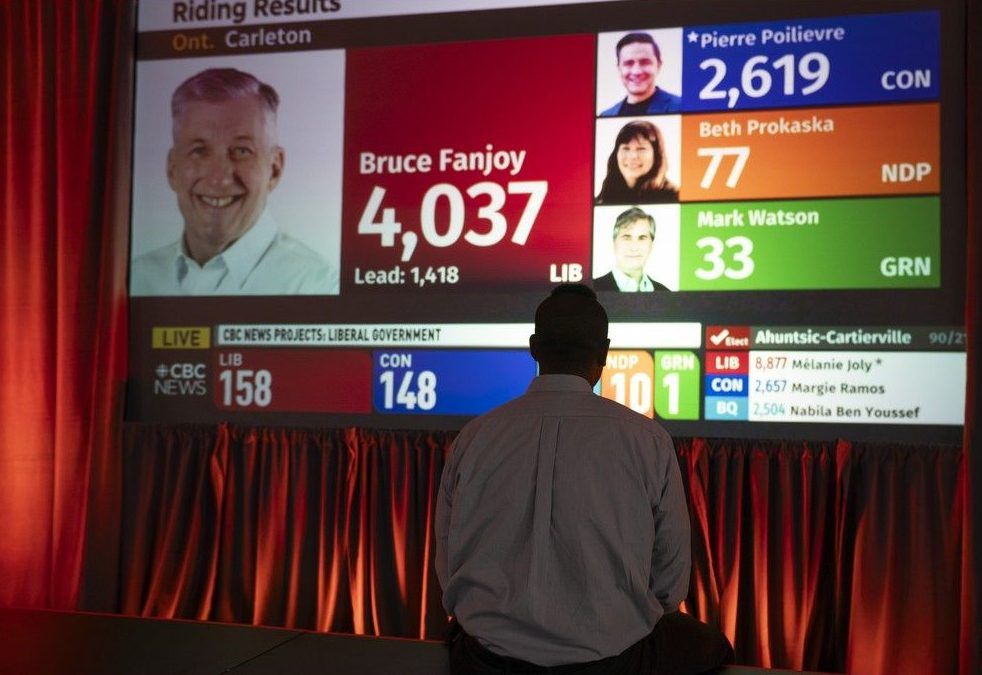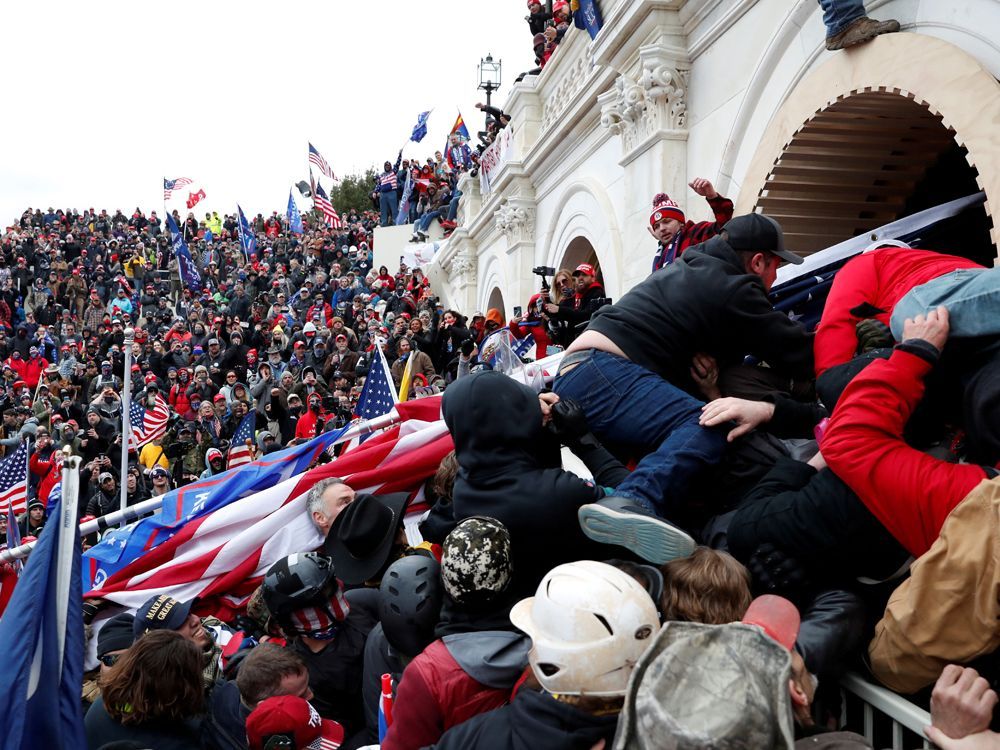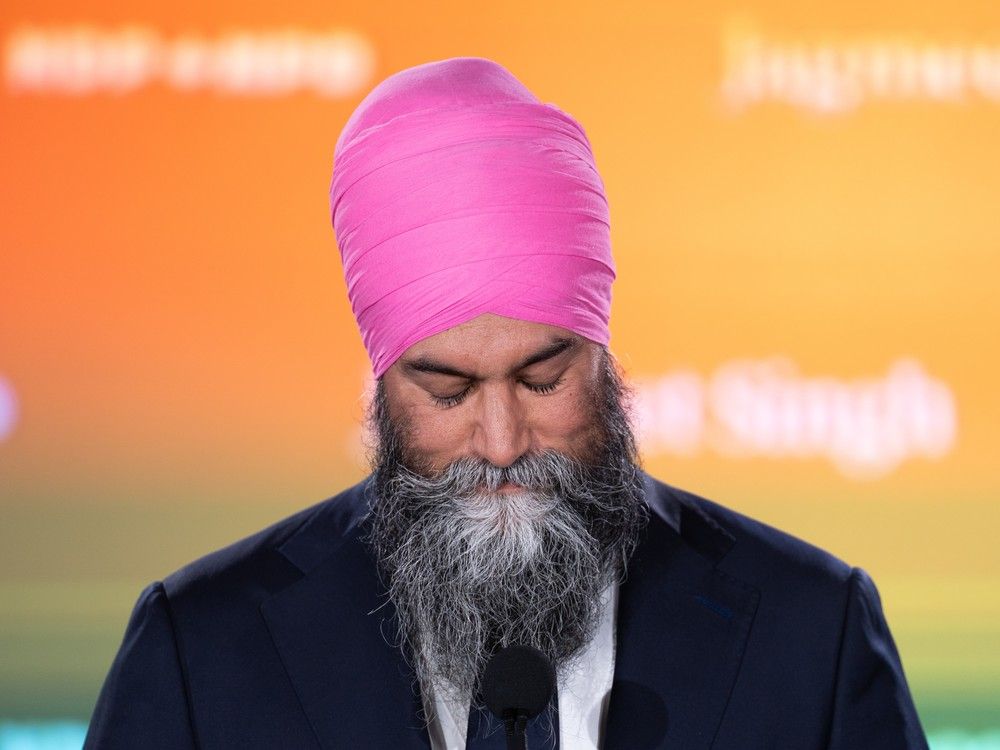
A simple map of B.C. that details how each riding voted in the recent federal election tells a complex story.
At first glance, it’s “a few red dots, floating in a sea of blue,” said University of Victoria political scientist Michael Prince.
B.C.’s vast Northern and Interior ridings, coloured blue to represent support for the Conservatives, dominate the map. Small patches of red — Metro Vancouver, the southern tip of Vancouver Island and Kelowna — show the vote-rich regions where Liberal candidates were elected.
If the map were somehow redrawn to show population, the two colours would be even, said Prince. The Conservatives and Liberals won a surprisingly similar share of seats and votes across the province. But as it is, it shows a different phenomenon: B.C.’s intensifying urban-rural divide.
“It’s big time,” said University of B.C. political scientist Richard Johnston, who believes the split could be “worrisome.”
The urban-rural divide isn’t new or unique to B.C., but several factors have caused political scientists to take note after the federal election. Here’s why it matters.
Is there an urban-rural divide in B.C.?
In short, yes. Outside the urban centres of Metro Vancouver, Greater Victoria and Kelowna, British Columbians elected Conservative candidates. Wins for the NDP in Courtenay-Alberni and the Greens in Saanich-Gulf Islands were the exception.
Johnston said this divide was also apparent in October’s provincial election. With only a handful of NDP MLAs elected in rural ridings across the province, Premier David Eby said he was concerned about the divide and promised to “govern for the entire province.”
Jack Lucas, a political scientist at the University of Calgary, said research shows this divide is larger today than at any other point in Canada’s history.
“Whether someone lives in an urban or rural place is a strong predictor of how they’ll vote,” with only regional divisions a stronger indicator, he said.
Why do B.C.’s urban and rural areas vote differently?
There is a big difference between the way of life in Vancouver and in Fort St. John, said Timothy van den Brink, a PhD candidate and sessional lecturer at Simon Fraser University. It makes sense that voters’ priorities would differ as well.
But he cautioned about taking an “absolutist” argument too far, pointing to the Conservative party’s successful efforts to win votes in diaspora communities, which are often urban. “It turns out that Conservative logic is often a good fit” in multicultural ridings, which might be true on other issues, or at other times, as well, he said.
“There’s been so much upheaval in the last two months,” said van den Brink. And the previous election happened during a global pandemic.
Hamish Telford, a political scientist at the University of the Fraser Valley, said some generalizations can be made.
Rural voters tend to be “older and whiter,” while those in urban areas are more cosmopolitan and have more education, he said. Rural voters “might feel like they’re losing their place in the country. Or when they go to the city, they might feel out of place. They want to hold on to a version of Canada that they understand.”
Telford said economic differences play a role, with people in agriculture and resource industries feeling “under attack” by environmentalists who live in cities, where more people are employed in public sector or retail jobs.
Lucas said people in cities have different and often greater needs than those in rural areas, giving the example or transit and highway networks. As a consequence, urban voters may be more pro-spending.
But Lucas, an expert on Canada’s urban-rural divide, also hesitated to draw a hard line between urban and rural B.C. There are different types of urban areas, including urban suburbs and more distant suburbs, while there are also different types of rural areas, like agriculture-based regions, remote Indigenous communities and towns built around a mill or mine. Voter concerns and identity in different places are not always neatly contained by definitions.
Why are some political scientists worried?
In some ways, the divide is just an extension of the normal disagreements that characterize politics, said Lucas. People have competing preference and priorities and some of that is manifest in where they live.
“What is concerning is that we have a geographically based system of representation at both the federal and provincial level,” he said. “The worry is that a government will end up with a caucus that doesn’t represent the place diversity of Canada.”
Lucas said he fears it is getting “harder and harder” for the Liberals to get rural representation in cabinet. The same might be true for a Conservative government trying to gain meaningful urban representation.
When government only cares about the concerns of people who vote for them, it can lead to bigger problems, said Prince.
Telford said a deep urban-rural divide risks contributing to polarization, and points to the U.S.
Reinforced by social media algorithms, “mutual respect seems to be disintegrating,” he said. “Some people find opposing views so odious that they view other people as a threat.”
It’s not hard to imagine polarization contributing to violence, he said.

What does this mean for future elections?
In the recent federal election, the collapse of the NDP — from 13 seats to three — reinforced the urban-rural divide in B.C. In the same way, the fall of B.C. United led to a two-party contest and stronger regional divisions in the last provincial election.
Part of that is a result of the first-past-the-post electoral system, which steers democracies toward a two-party system, said Telford. He believes the federal NDP has a “long road back” and may struggle to win back rural ridings in the Interior and on Vancouver Island, where many blue-collar workers now lean toward the Conservatives.
“The NDP used to transcend the urban-rural divide,” said Johnston. That may not be the case anymore, as support in mill towns has declined with the workforce and the union movement has become more “university educated, public sector.”

Johnston said he wouldn’t rule out the return of the federal NDP, particularly as the provincial brand remains strong. “But they won’t come back in Smithers, they’ll come back in Coquitlam.”
In part due to the growing divide, suburbs have become the “linchpin” in Canadian elections, he said. With urban concerns and some rural sentiments, they are the new battleground.
Suburbs, Lucas agreed, are “fascinating places in the middle of this.”